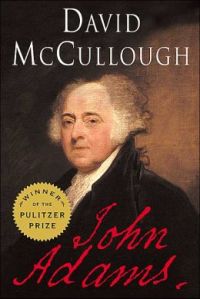by Rebecca Berg Manor
I have recently been reading Parenting, Inc.: How the Billion-Dollar Baby Business Has Changed the Way We Raise Our Children by Pamela Paul and have found it to be both infuriating and reassuring. In exposing the pervasive influence marketers have had on parents, Paul shows us how we are constantly inundated with the message that as parents we are never enough. We aren't aware enough, we aren't safety conscience enough, we're not qualified enough, educated enough, expert enough to raise our children without the help of "experts" and this nifty product that is helpfully being offered at a price.
By tracing the development of the "mama market" and it's reliance on fear-mongering Paul shows that many contemporary parenting anxieties are really constructs that have been so pounded into parent's heads it can be difficult to sort through the noise and hone in on the truth.
As someone who was raised in the 1980s and became a parent in 2013, I know a bit about fear-based parenting. Widely publicized kidnappings during the 1980s made parents nervous and children's formerly unrestricted wanderings were suddenly curbed. Enter the hyper-competitive nature of the 1990s and suddenly kids were not only given no time to freely wander, their free moments were rapidly shrinking, filled with private tutors, Mandarin lessons, ballet, etc. Parents viewed an increasingly global economy as a place filled with opportunities open to only those children who were most prepared. Add in technological developments and the Internet and homes were no longer insulated from every bad-news story. Local news, national horror stories, expert opinions, educational experts, and a million other voices were streaming into our homes, most of them telling parents that we're inadequate. It may seem a bit melodramatic to call this a tragedy, but I do think it is one. In my own friends I've seen mother's riddled with anxieties due to poorly researched news stories. I've experienced the worry of wondering if my son is at risk for "dry drowning" - an extremely rare event that has been broadly trumpeted on morning news shows, Facebook, and email.
This age of information makes all content see useful, but that's not true. I've seen information-overload in person at countless homeschool conventions. Spending over a decade attending these conventions gave me a window into how overwhelming it can be to take on the responsibility of educating your children at home. As a mother myself, I can surely empathize and am so grateful for those voices of reason and experience that help me tune in to my instincts and reject the fear. Here's what I found useful.
1. Read Teaching from Rest by Sarah Mackenzie. It's the best book for home schooling parents, hands down.
2. Choose an educational style/curriculum that suites your personality. If you are someone who craves structure, find a style that provides guidance but does not turn you into a servant to a schedule or checklist. If you're more carefree, find an approach that provides structure without squelching your spirit.
3. Remember that you know your children best. Take time to enjoy your little ones, getting to know their idiosyncrasies so that when you start questioning your abilities in light of some new study or trend, you can make the best choices for your family.
4. Choose joy. One of the greatest dangers of this information age is the ever present temptation to compare ourselves to other moms. When we can be inspired by other moms, that's wonderful. When
picture-perfect Instagram pictures start to make us feel inadequate and begin stealing our joy, it's time to step back and refocus on our own families.
5. Make your own education a priority. When we model curiosity to our children and show them that investing in our own development brings us joy, we're setting a good example.
6. Seek wisdom from your spouse. The moments when I feel most inadequate are when I want to shut down but my kind husband has shown me that those are moments when I need him to speak in to my life, to provide a better perspective.
7. Step back. It's so tempting to take on too much responsibility for our children, believing that if we just parent well enough, we can protect our kids. By trusting God with our children, we give ourselves the freedom to be even better parents; parents who engage with our children out of joy and not fear.
8. Have fun together. When the tyranny of school schedules becomes too much, take a day off and do something you all enjoy together. These breaks are so important. When my husband was writing his dissertation there were months where he would be trudging through research and would feel like he kept hitting the same wall. This was when I knew he needed a break. We'd take off on a mini-holiday and the time off always resulted in a breakthrough in his thinking. Breaks are not time wasted, they're essential to reordering perspective and making way for new thoughts and inspiration.
As we approach a new school year, I hope this is encouraging to you. Try to ignore the doomsday voices of our age, remembering that God chose you to parent your children and equipped you in just the right way.
See our video "Why BFB?"
Want to lean more about Beautiful Feet? In two minutes we explain how literature-rich history curriculum can inspire, educate, and build character. It's the power of good books!
We Would love to hear what you think! Chime in below in the comment section and share your thoughts. Don't forget to check out our Facebook and Pinterest pages. To learn more about Beautiful Feet Books, click here.
And if you've enjoyed this, please feel free to share using the buttons below.









































